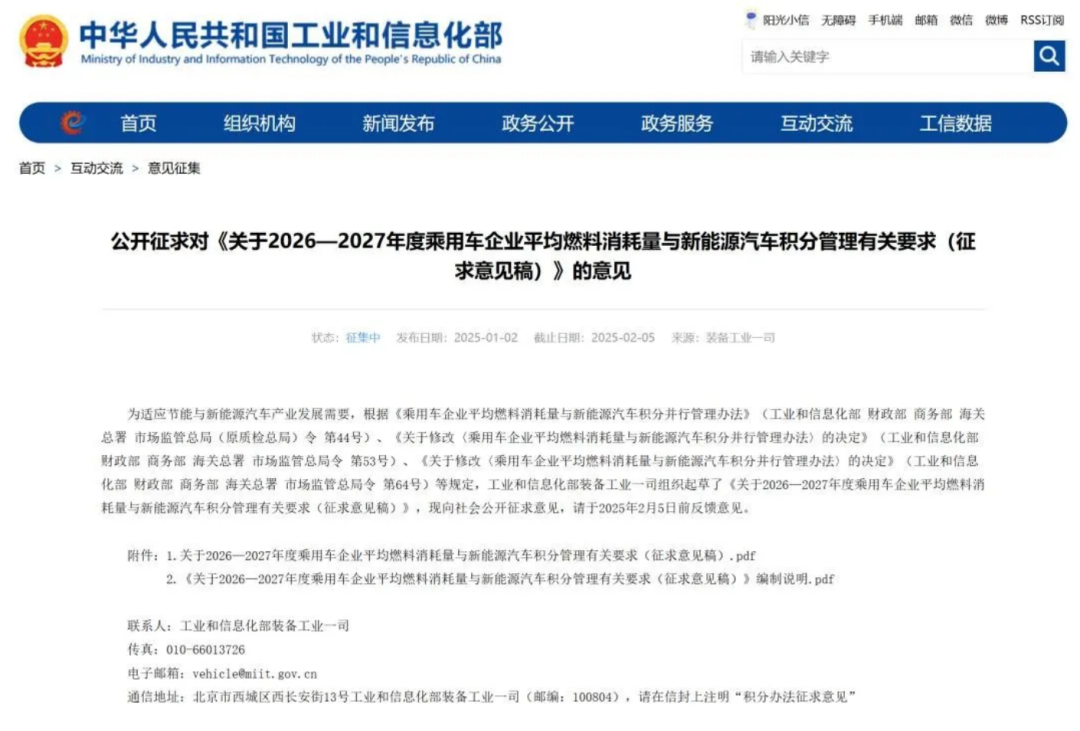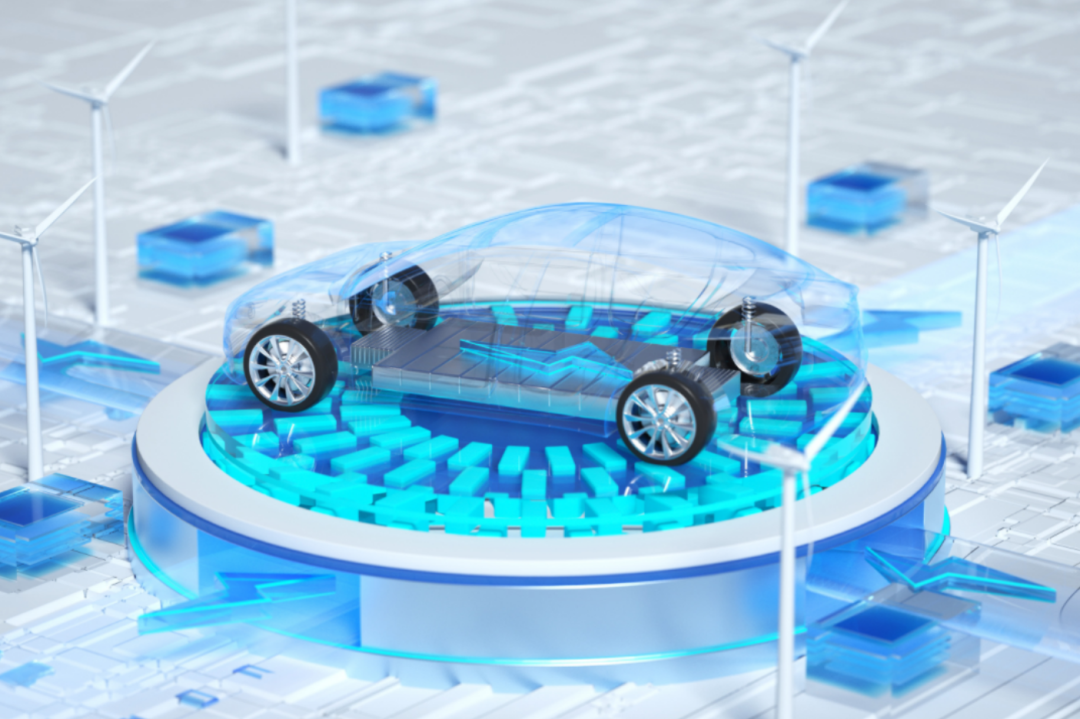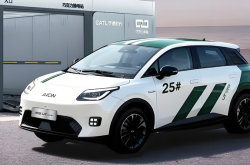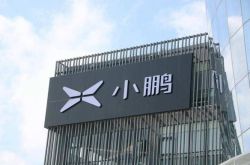New Energy Vehicle Firms Face Dual Challenge of Endurance and Power Consumption Amidst Evolving Credit Policy
![]() 02/05 2025
02/05 2025
![]() 566
566
Amidst the global automotive industry's rapid shift towards new energy, the Ministry of Industry and Information Technology (MIIT) introduced new requirements for vehicle companies regarding fuel consumption and new energy credits in 2025. The "Consultation Draft on Requirements Related to the Average Fuel Consumption and New Energy Vehicle Credit Management for Passenger Vehicle Enterprises in 2026-2027" will conclude its public consultation phase on February 5. Notably, the increased proportion of new energy credits and the introduction of rules linking low-temperature endurance, power consumption, and credits have emerged as key directives.
Regarding the proportion of new energy credits, the new regulations clearly outline the growth targets for the coming years. For 2026, the new energy vehicle credit proportion is set at 48%, rising to 58% in 2027 (an average annual increase of 10 percentage points, in line with the previous phase of adjustment). This significant shift necessitates vehicle companies to expedite the deployment of new energy vehicle product lines to meet increasingly stringent compliance standards.
Taking past data as a reference, with the continued promotion of policies, the market penetration rate of new energy vehicles in China has steadily risen. According to the China Association of Automobile Manufacturers, the penetration rate of new energy vehicles reached 40.9% in 2024, surpassing 50% from July to November. The substantial increase in the credit proportion poses a significant "test" for vehicle companies, urging them to enhance investment in new energy vehicle research and development, production, and sales, expedite the elimination of outdated production capacity, and facilitate the optimization and upgrading of the industrial structure.
▍The "baton" of the industry's development in credits
As a pivotal component of the new energy vehicle credit system, new energy credits, alongside average fuel consumption credits, constitute the "double credits" system, emphasizing their importance. The generation of new energy credits is intimately tied to the production and sales of new energy vehicles. When vehicle companies produce and sell new energy vehicles, they accrue corresponding credits based on the vehicle type, technical parameters, and other factors, using a specified credit calculation method.
For instance, the standard credit calculation method for pure electric vehicles is 0.012R + 0.8 (where R represents the driving range), the standard credit for plug-in hybrid vehicles is 2, and the calculation formula for fuel cell vehicles is 0.16P (where P represents the rated power of the fuel cell). These credits serve as a quantitative indicator of vehicle companies' achievements in the new energy sector.
From 2025 to 2027, the proportion of new energy credits will incrementally rise, from 48% in 2026 to 58% in 2027. This transformation will profoundly impact vehicle companies across various aspects. In terms of production, to fulfill the credit proportion requirements, vehicle companies must increase the production of new energy vehicles.
Some vehicle companies traditionally dominated by traditional fuel vehicles have formulated plans to expand new energy vehicle production capacity and accelerated the construction of new factories and the upgrading and transformation of production lines to bolster new energy vehicle production capacity. According to statistics, multiple self-owned brand vehicle companies plan to gradually increase the annual production of new energy vehicles in the coming years.

In terms of R&D investment, to stand out in the fiercely competitive market and obtain more credits, vehicle companies will also intensify investment in the R&D of core new energy vehicle technologies. On one hand, they will intensify R&D efforts on battery technology, aiming to enhance battery energy density, driving range, and safety while reducing battery costs. On the other hand, they will actively invest in the R&D of cutting-edge technologies such as intelligent networking and autonomous driving to elevate the technological content and user experience of new energy vehicles.
▍New regulations on low-temperature endurance and power consumption drive technological development
The endurance performance of new energy vehicles in low-temperature environments has always been a challenging issue for both consumers and vehicle companies. Every winter, the phenomenon of reduced endurance for new energy vehicles frequently occurs. When temperatures plummet, the battery performance of new energy vehicles is significantly affected, resulting in a substantial reduction in driving range. This problem not only diminishes the convenience of using new energy vehicles but also hampers the further expansion of the new energy vehicle market to a certain extent.
Based on actual test data, the endurance achievement rate of new energy vehicles in winter is generally low. In low-temperature environments, the chemical reaction rate inside the battery slows down, and the internal resistance of the battery increases, leading to a decrease in the available capacity of the battery and thus reducing the driving range of the vehicle. Low temperatures also impede the battery's charging speed, prolonging charging time and causing great inconvenience to vehicle owners.
The consultation draft issued by the MIIT explicitly introduces credit rules for the low-temperature endurance of new energy vehicles, aiming to steer industry enterprises towards continuously improving the low-temperature resistance performance of new energy vehicle products. Specifically, models with a low-temperature endurance decay rate of less than 35% will receive 1.2 times the credit encouragement. This rule aims to motivate vehicle companies to enhance the true endurance capacity of their vehicles in low-temperature environments and alleviate consumers' endurance anxiety when using new energy vehicles in winter.

There are also notable differences in the power consumption performance of new energy vehicles, with varying levels of power consumption among different models. Power consumption not only directly influences the driving range of the vehicle but also correlates with the user's cost of use.
The MIIT has also clearly stipulated credit rules for the power consumption of new energy vehicles, using 85% of the new national standard power consumption value as the target value to assess the power consumption level of vehicle models and provide corresponding credit calculation methods. Specifically, for models that do not meet the standard limit, the power consumption adjustment coefficient is calculated as 0.5; for models that exceed the target value, it is calculated based on the ratio of the target value to the actual value, with a maximum calculation of 1.2 times; for models that exceed the limit but do not meet the target value, it is calculated as 1 time.
This rule sets forth clear requirements for vehicle companies regarding power consumption control. If the national standard power consumption of a model is 10kW/h per 100 kilometers, its target value is 8.5kW/h. When vehicle companies can control the model's power consumption below 8.5kW/h, the lower it is, the higher multiple they can obtain in credit calculation, thereby garnering more credits. Conversely, if the model's power consumption exceeds 10kW/h, the credit adjustment coefficient will be halved, adversely affecting the company's credit acquisition.
From a market perspective, the power consumption credit and low-temperature endurance credit rules will prompt vehicle companies to proactively optimize their models' power consumption and winter performance. Models with superior performance can achieve or even surpass the target value in terms of power consumption, thereby gaining an edge in credit acquisition. For models with relatively outdated technology, especially some older models and marginal brands, if they fail to promptly optimize power consumption and endurance, they will face the risk of credit reduction, potentially putting them at a competitive disadvantage or even leading to their elimination from the market.

The MIIT's new policy on new energy credits imposes higher standards on vehicle companies' technological R&D capabilities. To meet the credit rules for low-temperature endurance and power consumption, vehicle companies need to augment investment in funds and manpower for technological R&D. The new policy also presents rare development opportunities for some companies, clarifying the direction of technological innovation and upgrading and product structure optimization, while also fostering the coordinated development of the industrial chain.
For consumers, with the continuous advancement of new energy vehicle technology and cost reduction, they are expected to purchase more affordable new energy vehicles. Lower power consumption allows for smaller and lighter batteries, thereby reducing vehicle costs. To meet credit requirements, vehicle companies may enhance product cost-effectiveness by optimizing production processes and lowering production costs. This will make new energy vehicles more affordable for consumers, and the driving range in winter will be effectively guaranteed, enabling consumers to travel with greater confidence in new energy vehicles.
Typesetting | Yang Shuo Image Source: MIIT, Shutterstock





